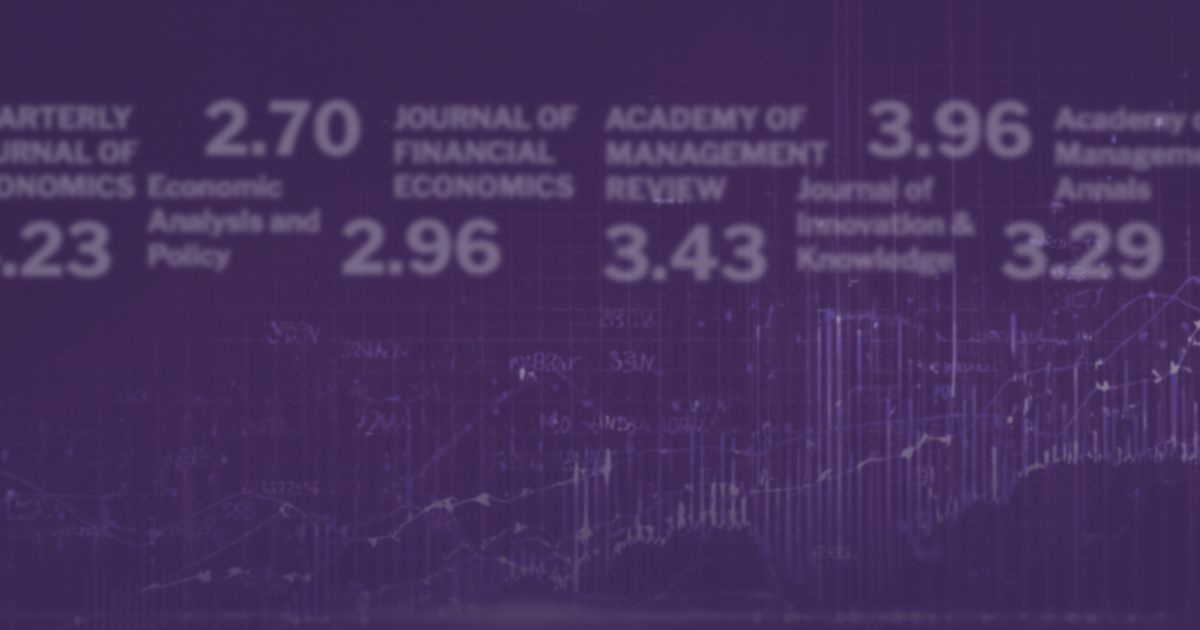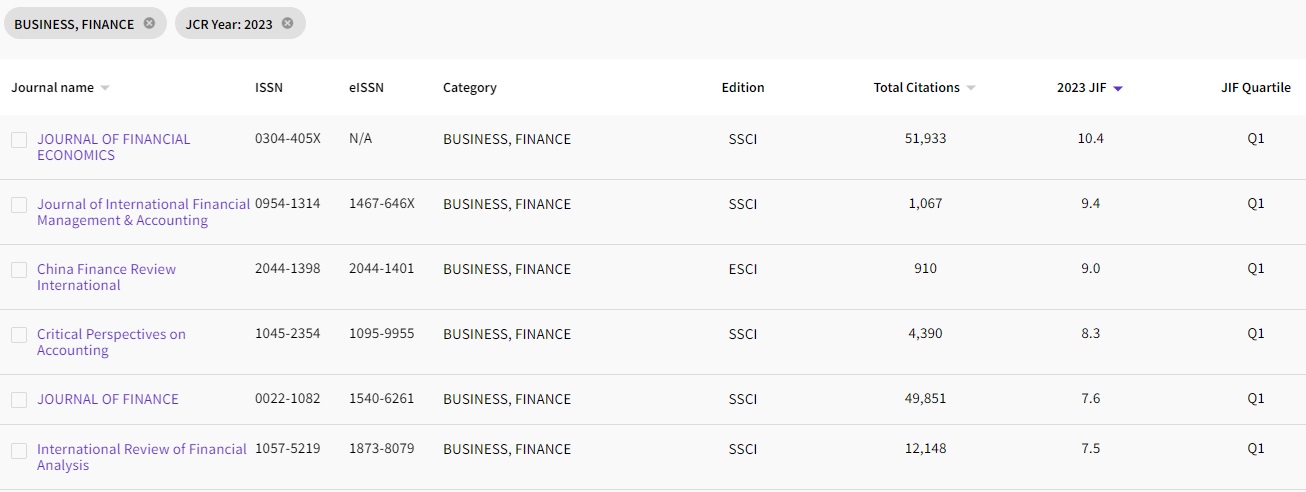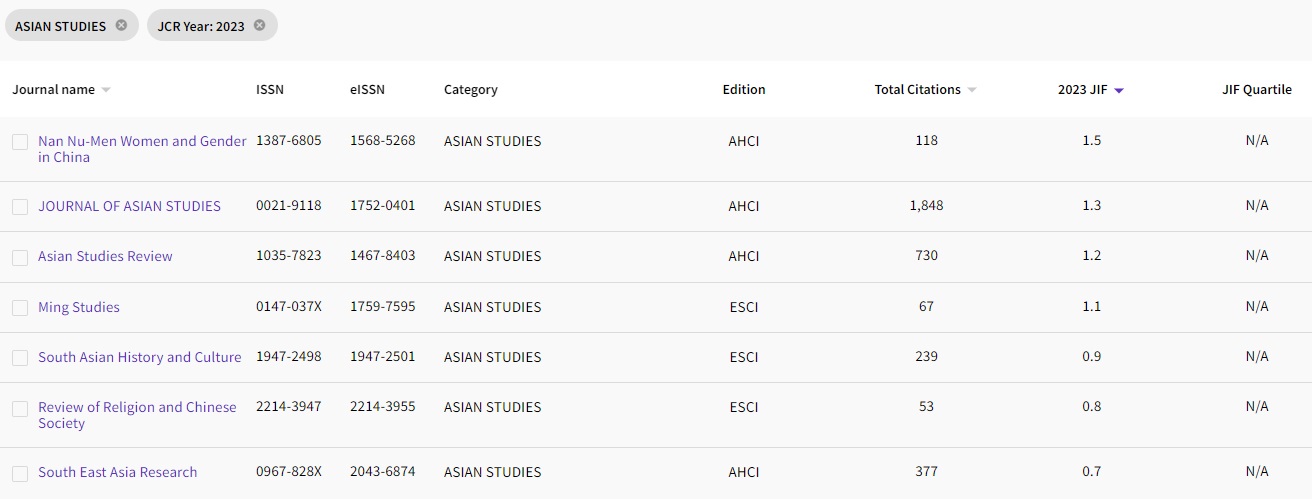
By Yeo Pin Pin, Head, Research Services
The Journal Impact Factors (JIF) has been updated to reflect 2023 citations in July 2024.
There are some changes to look out for with this update.
- The subject category now combines all the journals regardless of which database they are in, that is Arts & Humanities Citation Index, Emerging Sources Citation Index, Science Citation Index or Social Sciences Citation Index.
- The ranking of journals in the subject category is also unified.

Figure 1: For the subject category Business, Finance the top 5 journals include one from ESCI, i.e. China Finance Review International - The 25 subject categories under Arts and Humanities will not receive a rank, quartile or percentile due to the lower and slower citations in these disciplines. After consulting various stakeholders, there was consensus that the rankings would be difficult to interpret.

Figure 2: For the subject category Asian Studies, journals can be sorted by their JIF but quartile is not available (N/A) - Journal Citation Indicator (JCI) is calculated for all journals. This metric was introduced in 2021 for ESCI and has been extended to all journals covered by JCR. The Journal Citation Indicator (JCI) is the average Category Normalized Citation Impact (CNCI) of citable items (articles & reviews) published by a journal over a recent three-year period. The average JCI in a category is 1. The advantage of JCI is that it covers 3 years data (one more year than JIF) and is normalized by using CNCI.

Figure 3: Journals can be sorted by JCI
You can access Journal Citation Reports via the A-Z Databases page or go directly to JCR via the library subscription.